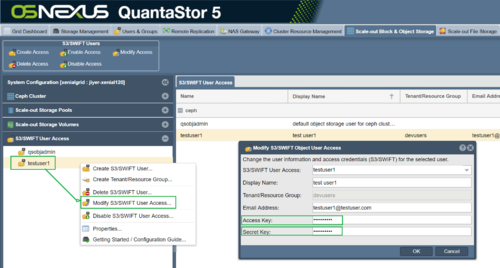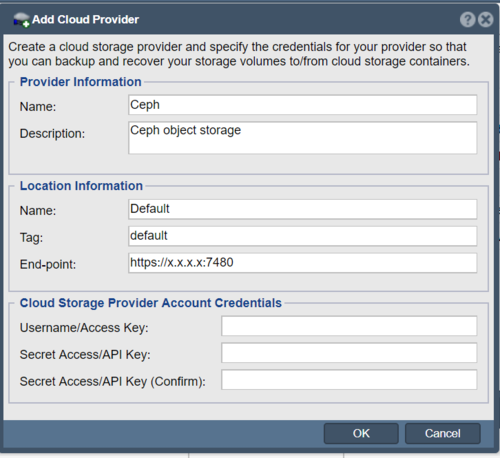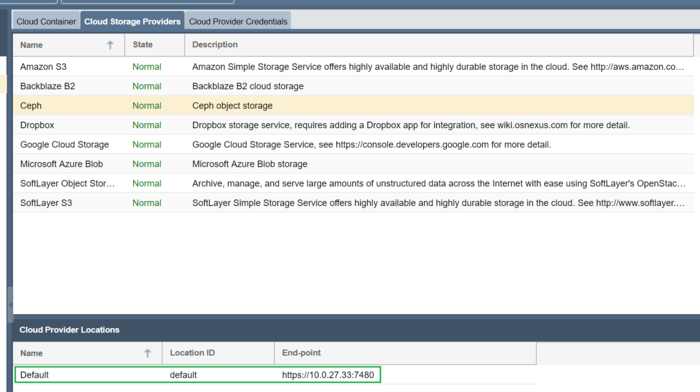Ceph Object Storage: Difference between revisions
Jump to navigation
Jump to search
| Line 2: | Line 2: | ||
==Overview Configuration Steps== | ==Overview Configuration Steps== | ||
* Get the user credentials from a Ceph setup configured/managed by Quantastor, you can do that through the qs cli or the Quantastor Web UI. | |||
qs ceph-user-access-entry-list --ceph-cluster=<cephClusterName> --verbose | |||
[[File:CEPHOBJECTSTORAGE.PNG|500px]] | |||
* Login to your Ceph configuration. | * Login to your Ceph configuration. | ||
* Get the Access Key and Secret Access to the Ceph Object Storage. | * Get the Access Key and Secret Access to the Ceph Object Storage. | ||
Revision as of 18:18, 14 May 2019
QuantaStor's Cloud Containers feature enables one to setup a NAS Gateway to custom Ceph Object Storage buckets.
Overview Configuration Steps
- Get the user credentials from a Ceph setup configured/managed by Quantastor, you can do that through the qs cli or the Quantastor Web UI.
qs ceph-user-access-entry-list --ceph-cluster=<cephClusterName> --verbose
- Login to your Ceph configuration.
- Get the Access Key and Secret Access to the Ceph Object Storage.
Add provider credentials within QuantaStor
- In the Cloud Provider tab, right click to select "Add Provider".
- Change the end-point to the Ceph Object Store.
- Add the Access Key and Secret Access to the Ceph Object Store.
- Select "Ceph" in the "Cloud Storage Providers". The location of the selected end point should be displayed.
Create/Add Cloud Container(s)
Now navigate to the Cloud Containers section and then Import or Create a new Cloud Container using the Softlayer S3 credentials you entered before. Note that after you create a new container you will find a Network Share listed in the main Storage Management -> Network Shares section which represents the container and makes it accessible via NFS and SMB.


